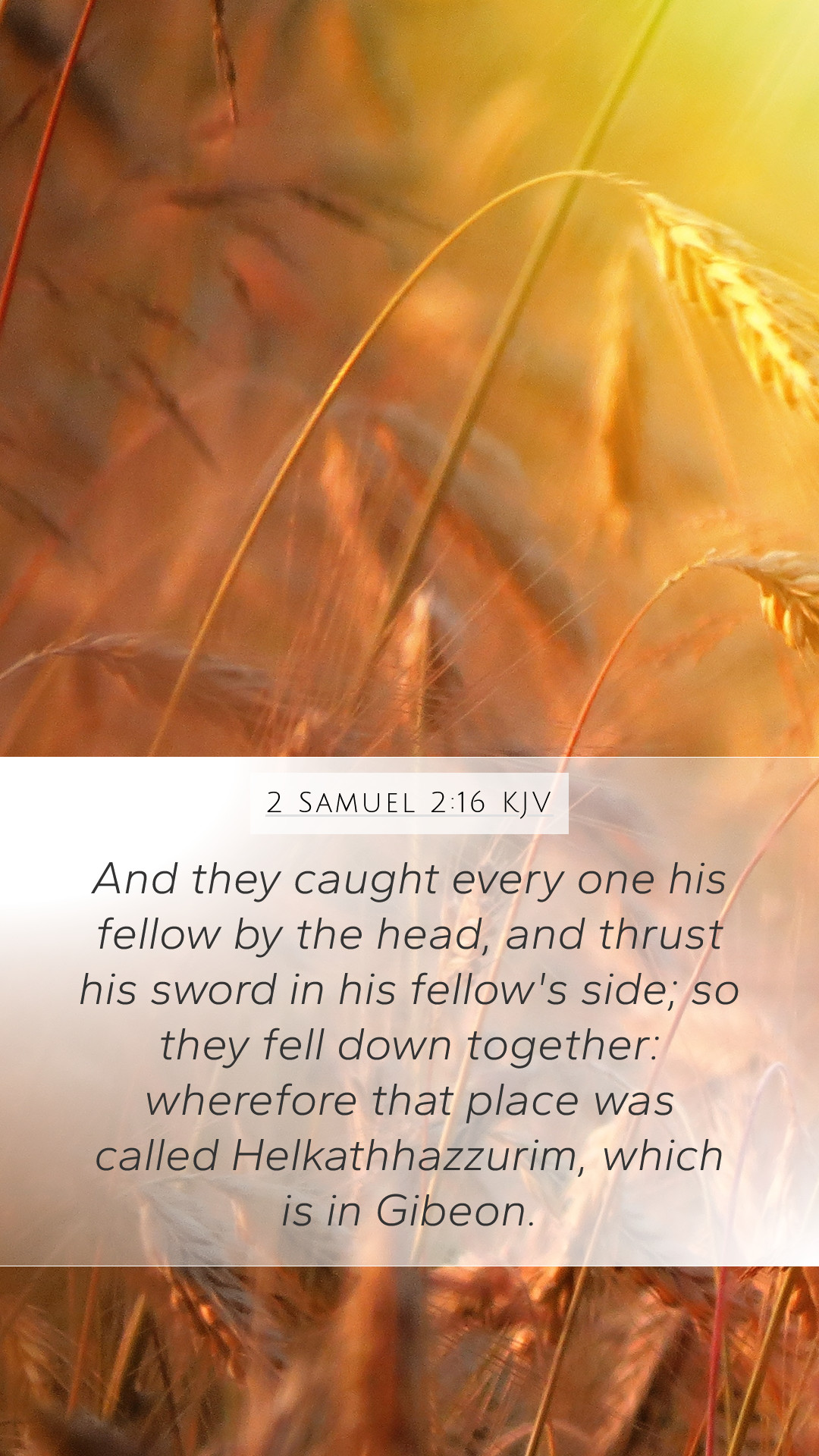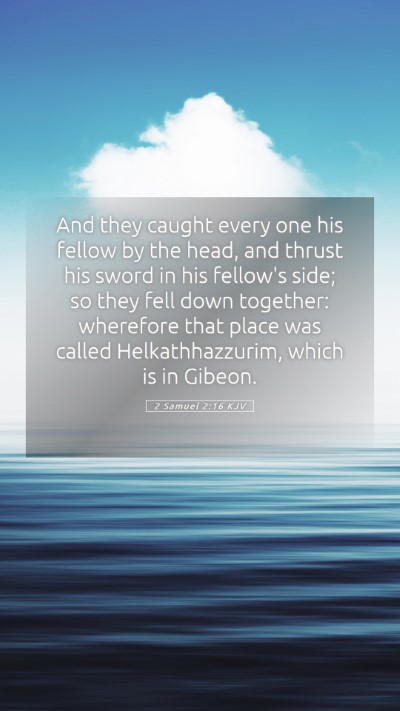Understanding 2 Samuel 2:16
The verse 2 Samuel 2:16 states: "And they caught every one his fellow by the head, and thrust his sword in his fellow's side: so fell down together: wherefore that place was called Helkathhazzurim, which is in Gibeon." This verse reveals a remarkable moment of conflict during the early years of David's reign, highlighting themes of battle, rivalry, and the nature of human conflict.
Bible Verse Interpretations
Understanding this verse requires analysis of both its historical context and its theological implications. It speaks to a series of events where two groups, led respectively by Abner and Joab, engage in combat. The actions described illustrate not only the physical confrontation but also symbolize broader themes of division and strife among the tribes of Israel.
Scripture Analysis and Historical Context
-
Historical Setting:
This battle occurred during a turbulent time following the death of Saul, when tensions over leadership were high. David had been anointed king, but factions remained loyal to Saul’s house, particularly to Abner, who represented Saul's lineage.
-
Symbolism of Conflict:
The physical act of catching one another by the head and thrusting a sword indicates not just direct combat but also a deeper interpersonal struggle between factions within Israel. This represents the betrayal and violence that can emerge even among those who are kin.
-
Place of Battle:
The name 'Helkathhazzurim' translates to "the field of strong men," indicating the valor and the tragic outcome of the confrontation, where ultimately both sides suffered loss. It may serve as a reminder of the consequences of division and conflict.
Bible Study Insights
For those engaged in Bible study groups or seeking online Bible study materials, this verse offers a rich area for exploration. Here are some insights:
-
Lessons in Leadership:
This passage can prompt discussion on the nature of leadership and loyalty, raising questions about how individuals align themselves in times of crisis.
-
Understanding Scripture in Conflict:
It allows for an in-depth exploration of how conflict shapes community dynamics, which can be further expanded with Bible study lessons on interpersonal relationships.
-
Application to Daily Life:
Engaging with this text can bring awareness to modern-day conflicts, fostering discussions around reconciliation and understanding.
Bible Verse Commentary
Matthew Henry, Albert Barnes, and Adam Clarke provide profound insights into this passage:
-
Matthew Henry:
Henry emphasizes the futility of internal divisions among God's people, reflecting on how violence and strife lead to destruction, reiterating that true strength lies in unity.
-
Albert Barnes:
Barnes points out the significance of the actions of both sides, shedding light on how personal ambitions often lead to communal chaos, calling for introspection among believers today.
-
Adam Clarke:
Clarke discusses the symbolism of the actions taken in battle and relates them to moral lessons, urging readers to reflect on their own conflicts and resolutions.
Cross References
This verse is connected with several other passages:
- 2 Samuel 1:9-10 - Reflects on the death of Saul and the emerging conflicts afterward.
- 1 Chronicles 12:29 - Discusses the division in loyalties among the Israelites.
- Matthew 12:25 - Jesus teaches that a kingdom divided against itself cannot stand, echoing the themes in 2 Samuel.
Conclusion
Ultimately, 2 Samuel 2:16 serves as a poignant reminder of the complexities of human relations, especially in the context of leadership struggles and conflicts within communities. The insights derived from this verse can be instrumental for anyone seeking a deeper understanding of Scripture, as well as those involved in Bible study resources seeking to illuminate the relevancy of ancient texts in contemporary life.


